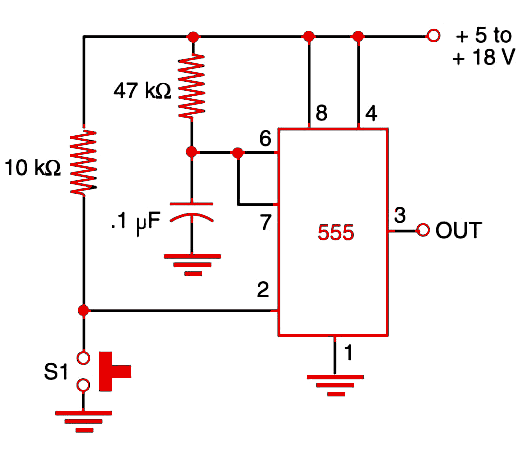The main problem with this type of circuit is that the switch must be debounced. Any voltage spike produced when the switch is closed and opened can be interpreted by the translator as an additional pulse. Therefore, when closing and opening the switch to produce only one pulse, the circuit can receive many pulses and advance the motor more than one step. (See other projects in this section for debounce circuits.) The block shown in Figure 1 is a stepper that can be used to produced only one pulse when a sensor or a switch is momentarily pressed.

The main advantage of this circuit is that the duration of the pulse depends only on R2 and C1, and not from the time the switch (or sensor) is kept on. The circuit can drive TTL and CMOS blocks and be powered from voltages in the range between 5 and 15 V.




